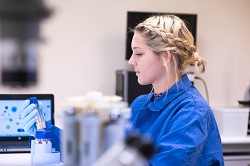Urine-based test for bladder cancer diagnosis
Bladder cancer is any type of cancer that originates from tissues of the urinary bladder. It is the 4th most common cancer in men and the 7th in women, with 330 000 to 380 000 new cases annually worldwide. Bladder cancer is one of the most expensive cancers to manage and it is costing the United Kingdom (UK) alone over GBP 50 million per year. Cystoscopy and/or cystoscopic biopsy remain the current gold standard diagnostic and monitoring tools. These procedures are highly invasive and expensive, costing up to EUR 1 200 per test, and have been reported to miss in the region of 25 % of all bladder tumours. As an adjunct to cystoscopy, urine cytology is routinely carried out globally but its deficiencies in terms of poor cancer detection (low sensitivity) are well recognised and reported. The objectives of the LAUREN project were to develop a best in class integrated, non-invasive urine-based solution for diagnosing bladder cancer and subsequently monitoring its recurrence. Rapid, non-invasive detection of bladder cancer in human urine LAUREN has made possible the engineering design and development of a single use point-of-care device, which isolates, purifies and preserves urinary cells from urine in less than 3 min, thereby extending their viable diagnostic life from a few hours to 10 days. “Intact optimal cells are used in this analysis as opposed to cells degraded over time,” says Mr Berry, LAUREN project coordinator. The detection of cancer cells was based on minichromosome maintenance protein-2 (MCM2), a protein essential for genomic DNA replication. The technology was further developed by the introduction of digital imaging and diagnostic algorithms. The first phase of the project involved the manufacture of prototype devices, in conjunction with a specialist medical device design company. These devices were further subject to full clinical evaluation for regulatory purposes. One of the main obstacles that they encountered was the difficulty in translating the laboratory developed prototype into an optimally functioning unit capable of being manufactured. “This has been a time consuming, systematic and iterative process, and involved the assembly of a multidisciplinary team comprising engineers, biologists and manufacturing experts,” adds Berry. Non-invasive diagnostic for bladder cancer detection – Release in 2019 The concepts and clinical results of this non-invasive diagnostic were tested and analysed respectively, in training sets involving more than 500 patients. An independent multi-centre regulatory controlled clinical trial is currently ongoing, which will lead to commercial application of this technology and availability to the clinical and patient community during 2019. “We deliberately chose not to disseminate information until we were confident that all individual components of the technology bundle came together to perform as an integrated solution,” explains Berry. Results have been discussed with relevant key opinion leaders (KOLs) in the clinical and scientific community in the EU, UK and United States and have received encouraging feedback so the researchers are now planning to publish this unique approach and the clinical results. Results have greatly exceeded original expectation due to incremental performance improvements achieved at each stage in the testing process. The commercial dissemination of this technology will save considerable costs required for the detection of bladder cancer. For instance, 50 % or more of cystoscopy tests used to monitor cancer recurrence could be avoided. This will set the way forward for the development of further diagnostic devices for other diseases.







